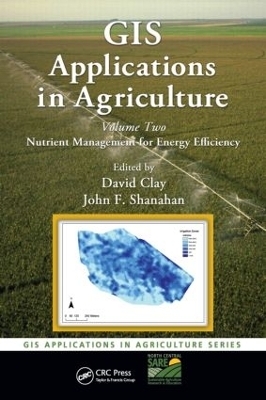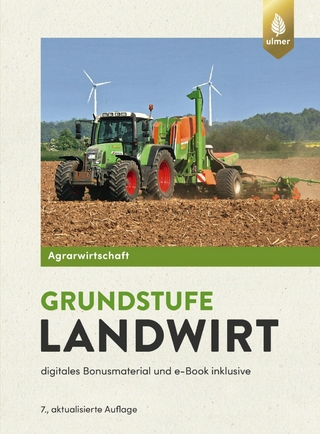
GIS Applications in Agriculture, Volume Two
Crc Press Inc (Verlag)
978-1-4200-9270-7 (ISBN)
We are entering a new era in production agronomics. Agricultural scientists the world over call for the development of techniques that simultaneously increase soil carbon storage and reduce agriculture’s energy use. In response, site-specific or precision agriculture has become the focus and direction for the three motivating forces that are changing agriculture today: the expanding capacity of personal computers, the molecular biology revolution, and the recent developments in information technology such as the increasing use of geographical information systems (GIS).
Using mathematics, technology, and creativity, GIS Applications in Agriculture, Volume Two: Nutrient Management for Energy Efficiency examines the development of nutrient management practices that help producers improve their profitability and energy efficiency. Throughout the book, chapters demonstrate how complex mathematical and spatial modeling approaches can provide the basis for much of our present and certainly our future management practices.
Highlighting recent successes and the nuts and bolts associated with implementing the proposed techniques, the book covers energy efficiency calculations, techniques for overcoming yield-limiting factors, soil information collection and analysis, and remote sensing for improving management decisions. It describes the development of an economically optimum site-specific corn plant population equation based on an experiment containing many field sites, the estimation of soil productivity and energy efficiency using online data sources, and the assessment and implementation of site-specific carbon and water management systems, analyzing energy efficiency of compost and manures.
Emphasizing the mathematics that will enable producers to make full use of the technological advances made during the 21st century, GIS Applications in Agriculture, Volume Two holds the key to the successful, sustainable, and efficient production of food to feed the ever increasing world population.
David Clay is professor of Plant Science at South Dakota State University. His research program aims to develop and test sustainable agricultural management systems that enhance environmental quality and maintain rural economies and self sufficiency. John Shanahan is an Agronomy Research Manager with Pioneer Hi-Bred International of Johnston, Iowa. He is responsible for developing and disseminating agronomic recommendations that enable farmers to maximize economic returns while improving nutrient and water use efficiency in crop production.
Introduction: scale of the problem, impact of nutrient management on energy efficiency, the relationship between energy efficiency and production efficiency. Calculating energy efficiency. Obtaining critical information. Defining field boundaries. Obtaining digital information, remote sensing, soils, yield monitor data. Manure management. P index relationship to energy and water quality efficiency. P management zones. Manure impacts on carbon, N, and water budgets. Water management. Relationship between water and energy efficiency. Water and nutrient management-irrigation planning. Water and nutrient management for ethanol production. Matching crops, landscape positions, and nutrient management. Landscape planning for improved water use efficiency. Legumes and cover crops. Crop residue harvesting impacts. Nitrogen. Relationship between N and energy efficiency. Real-time management vs. mapped management, Remote sensing- Ground-based sensor technology vs. aerial or satellite imagery. Model-based recommendations. Nutrient removal based recommendation. Delta-yield based N recommend.
| Erscheint lt. Verlag | 25.2.2011 |
|---|---|
| Reihe/Serie | GIS Applications in Agriculture |
| Zusatzinfo | 72 Tables, black and white; 228 Illustrations, black and white |
| Verlagsort | Bosa Roca |
| Sprache | englisch |
| Maße | 156 x 234 mm |
| Gewicht | 816 g |
| Themenwelt | Weitere Fachgebiete ► Land- / Forstwirtschaft / Fischerei |
| ISBN-10 | 1-4200-9270-7 / 1420092707 |
| ISBN-13 | 978-1-4200-9270-7 / 9781420092707 |
| Zustand | Neuware |
| Haben Sie eine Frage zum Produkt? |
aus dem Bereich


